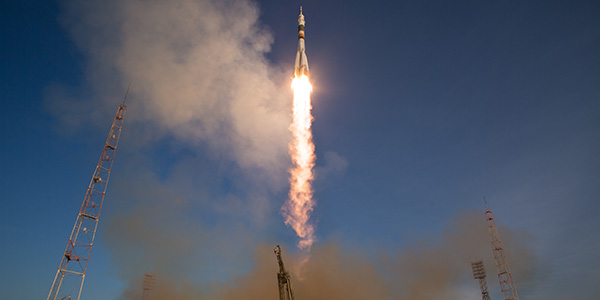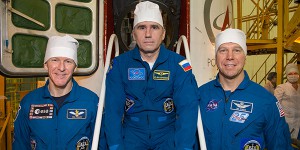
December 15, 2015, by Emma Thorne
Living in space – how will Tim stay at the Peake of fitness?
At around 5.25pm this evening, the Soyuz space capsule carrying British astronaut Major Tim Peake will dock with the International Space Station, his home for the next seven months.
It’s almost impossible to imagine what life on board ISS will be like for the 43-year-old former pilot. But in the days and weeks ahead, as well as enjoying an unparalleled view of planet Earth – the moment, he told journalists, he was most looking forward to on the mission – he will need to start putting into practice years of training on how to master eating, drinking, sleeping and working in challenging zero gravity conditions.
However, within just a few short hours Mr Peake – dubbed ‘Major Tim’ by the world’s media – will start to experience other, less visible changes as the unique weightless conditions begin to modify the way his body’s metabolism functions.
During his time in space, Mr Peake is expected to undergo significant muscle and bone degradation and loss in common with other astronauts who have spent extended periods in spaceflight.
Scientists believe studying these changes could be key to understanding how humans might cope with long-duration space exploration in the future.
But back on earth, it could also help to tackle similar issues with age-related muscle loss and wastage which many people experience in the later years of their life.
Dr Nathaniel Szewczyk in the University’s School of Medicine is among those studying the phenomenon, using the organism Caenorhabditis elegans (C. elegans) which has biological mechanisms very similar to human beings.
On numerous occasions he has blasted flasks of the microscopic worms up to the International Space Station, where researchers have been successfully able to monitor the effect of low Earth orbit (LEO) on up to 12 generations of the creatures over several months.
The experiments allow them to detect changes in growth, development, reproduction and behaviour in response to environmental conditions – including exposure to radiation.
Dr Szewczyk said: “Sending people up to ISS is a hugely expensive business and experiments which expand our knowledge allow us to add extra value to the experience.
“This is particularly true when that research has the potential to not only to teach more about conditions in space but also to develop our understanding of human health back on earth.”
In an attempt to minimise the muscle damage, during his seven-month stay on ISS, Mr Peake will be exercising for two hours every day in what he calls the ‘highest, fastest gym in the universe’ and has invited schools and children to train with him by undertaking the Space to Earth challenge to cover the 250 miles from space to earth during his mission by running, swimming, cycling – or even space hopping.
Mr Peake has also been trained to conduct a programme of experiments in medical science, radiation physics and materials – including muscle mass tests on his own body – but on this occasion that won’t include any work on University of Nottingham research.
Instead, Dr Szewczyk is planning future missions due to take off in around two years which will focus on the molecules behind genetic changes linked with muscle degeneration.
Read more about Dr Szewczyk’s previous research here:
Countdown to space mission for worms
Microscopic worms could help open up travel into deep space
Microscopic worms could hold the key to living life on Mars
Nottingham experts take part in world’s first commercial space flight
Spaceflight may extend the life of microscopic worms
No comments yet, fill out a comment to be the first


Leave a Reply